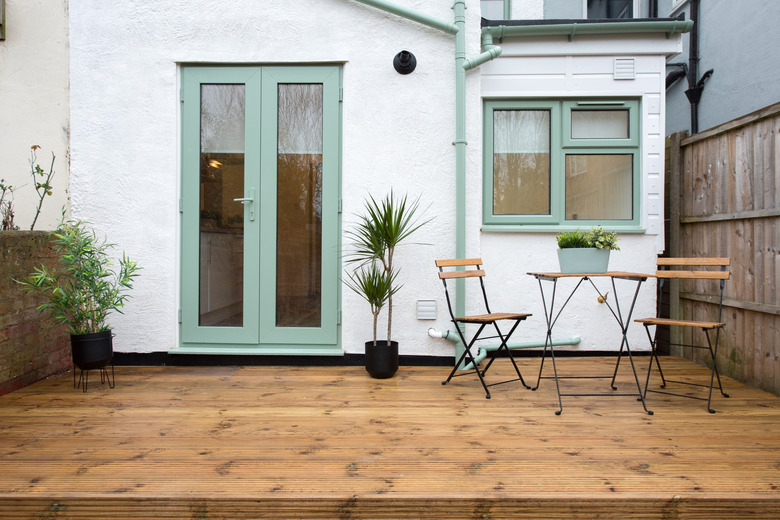What Are Sleepers When Installing A Deck?
If you want to build a deck on a flat, hard surface, you need to construct a frame even if the surface is solid enough to support the boards without one. This frame will consist of joists that run perpendicular to the decking boards, and when they sit on a solid surface instead of being supported by posts and beams, they're known as sleepers.
Sleeper boards sit directly on top of a solid surface to facilitate drainage and allow air to circulate under the decking. They are typically connected to rim joists, but they don't have to be standing on the edges like normal joists. They also don't have to be made of wood; in fact, sleepers made from composites or recycled PVC decking boards usually last longer than wood sleepers.
Drainage for Deck Sleepers Over Concrete
Before constructing a deck over a concrete surface or any flat surface, it's important to make sure the surface sheds water properly. If water pools in the middle, it will either rot the sleepers or promote mold growth. Before installing the sleepers, you may have to make adjustments to the surface to get water to flow off it. When this creates a slant, builders often cut the sleepers at an angle to avoid telegraphing the slant to the surface of the deck.
When installing sleepers, it's important to note the direction of water flow and align the sleepers parallel to it. If you're forced to install them in a perpendicular direction, it's important to provide weep holes in the sleepers or spacers between the sleepers and the surface to allow water to drain. No matter how much effort you put into this, however, drainage won't be as efficient as it will be if the sleepers are parallel to water flow.
How to Install Sleepers
A sleeper system can be constructed like a regular deck frame without the posts or beams, but it doesn't have to be. When installing decking in some situations, such as on a flat roof, you may want to minimize the height. Turning 2x6 decking boards on their edges and using them as sleepers makes the final deck height 7 inches above the flat surface (this includes the thickness of the decking boards), but if you lay the boards flat, you increase the height by only 3 inches.
Whether you lay the sleepers flat or on edge, they need the same spacing as conventional deck joists — usually 16 inches on center — to provide support for the decking boards. They often need to be securely attached to the surface or to the rim joists. When placing PVC or wood sleepers on edge, you can use joist hangers, but when placing them flat, you have to use some other method (such as screwing them using pocket holes).
More Sleeper Installation Pointers
A common method when installing a sleeper system on a concrete surface, such as a patio, is to lay the boards flat and secure them to the patio with concrete screws or nails. It's fine if the concrete isn't perfectly level, as the sleepers can follow the contours of the surface, but be sure to insert wood shims underneath them for support in places where the concrete dips.
Constructing a sleeper system provides a good opportunity to recycle waste vinyl decking because while it doesn't have the structural integrity for a regular frame, vinyl decking has enough support underneath it as part of a sleeper system to do the job. Builders also commonly use pressure-treated wood to construct sleepers, but even though pressure-treated wood resists rot, it's important to treat ends with a preservative after you cut them. The environment under a deck constructed on a sleeper system is wetter than that under a regular deck, and untreated ends can rot.
